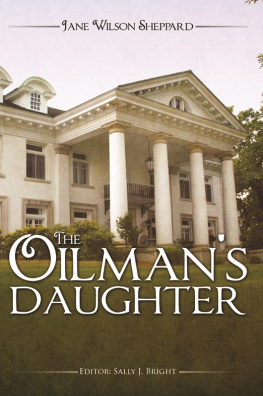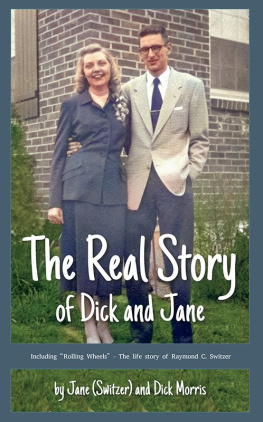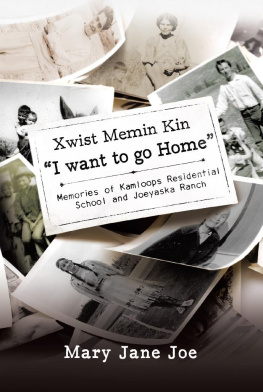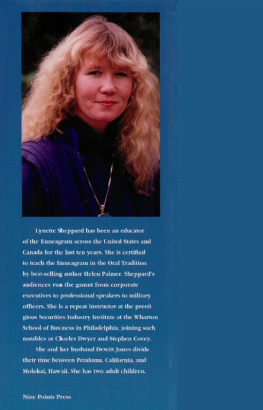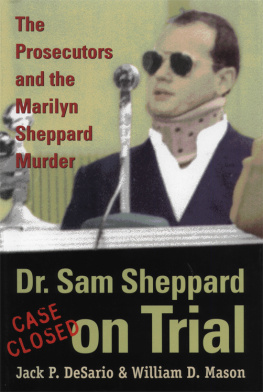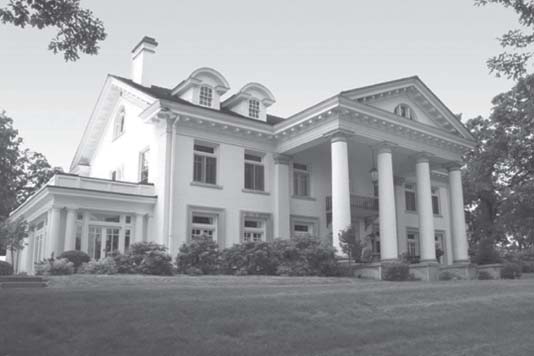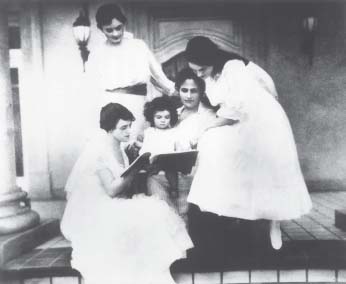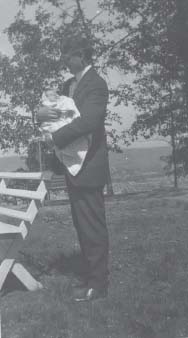The Oilmans Daughter
Copyright 2016, Sally J. Bright Trust
All Rights Reserved.
No part of this book may be reproduced, stored in a retrieval system, or transmitted by any means, electronic, mechanical, photocopying, recording, or otherwise, without written permission from the author.
ISBN: 978-1-942451-41-9
eBook ISBN: 978-1-942451-50-1
For Janes Family
Contents
Who Was Jane?
M y mother, Jane Wilson Sheppard, was three years old in 1917 when her family moved to Oklahoma. Around seventy years later, she began writing anecdotes from her life. As I read stories of her childhood, I realized how much history she includedhistory that should be shared and preserved. She wrote about early oil fields and county fairs; Tulsas landmarks, its race riot, and its riverside area; Oklahomas 101 Ranch and Pawnee Bill; and her life inside a convent school.
Most of her memories revolve around her Tulsa neighborhood near the Arkansas River and her interesting family, as one neighbor euphemistically described it. She and her two younger nephews Billy and Jack had adventures ranging from poignant to hilarious. They were tended by black servants almost as though the family lived in the Deep South.
Jane was born in the familys Huntington mansion, Kenwood, which is still a showplace. Her father, John A. Sheppard, was a prominent attorney, landowner, and former state senator who came west with the early oil boom. He helped develop the Boynton Pool near Muskogee and by 1917 had settled his wife, Lydia; her mother; and Jane in Muskogee. Two older daughters, Edwina and Pauline, were married. The third, Wells, was in boarding school. By 1920, the family had moved to the fashionable new Buena Vista neighborhood in Tulsa near what Jane considered her forest along the Arkansas River.
As Janes three sisters moved into and out of her life, an undercurrent of dysfunction gradually swept her from the security of childhood in surprising directions.
I edited and rearranged her material more or less chronologically, and I changed two names, but the memories and the nave childs voice are hers. She begins with the train trip westour first glimpse into a bygone era.
Sally J. Bright
March, 2016
Kenwood, Huntington, West Virginia Photo Credit: Huntington Quarterly, Huntington, WV
Pauline, Edwina, Jane, Lydia and Wells at Kenwood 1917
John A. Holding Baby Jane at Kenwood
A Brave New World
W hen we left Kenwood, I was lifted up the steps of a train. Mother took my hand, and we followed a porter down a narrow hallway. We reached our compartment, and he put our bags on a shelf over our heads. I was told to sit by the window. I heard a voice call, All aboard! over and over until only an echo of the sound remained. The train jerked forward, and we left the station.
Mother said we had to dress for dinner. She told me it was dangerous to go to the dining car. We would have to pass through cars and step out- side between them. She said there were canopies over the walkways. We went to the end of the first car, opened a door, and stepped out. I could feel a rocking motion and hear wheels rolling beneath us. We stagger-walked. People in the day cars sat together without any room around them. They had shoe boxes of food, and children were eating bananas and apples. I wanted to stay with them.
Finally, we came to the dining room. Grandmother was already seated. Silver and crystal gleamed on the white tablecloths. I watched glasses rock back and forth to the rhythm of the train. I stuck my fingers in the finger bowl. I had to give that up. I wanted the white ruffle on the mignon, but they shook their heads. So I just watched waiters go from table to table.
As we went back, we saw people in the day car asleep, sprawled all over each other. In our compartment, the seats had disappeared. Instead there were beds with white sheets and large white pillows. Tiny lights shone. I thought it magic to lie in the dark and listen to train sounds. I heard whistles far away or close by when another train rushed by. I thought we would be on one of those returning to Kenwood soon.
The next day I heard the conductor calling, Sant Looee over and over. Mother was crying. Grandmother joined us, took my hand, and we stepped into the passageway. A porter brushed our coats. Grandmother tipped him, and we were helped off the train. Grandmother told Mother to quit crying, that soon she would be with John A.
In Oklahoma we first lived in the Severs Hotel in Muskogee. I spent most days in a room next to Grandmothers. In the mornings, a maid appeared with a tray of hot chocolate, toast, and cereal for me. Grandmother always called out telling me to eat my toast. I ate the center of the bread, then crawled under the bed and put the crusts up in the springs. In afternoons a white chauffeur took me down to the side yard of the hotel, where I could sit and pick clover. He told me to look for one with four leaves. I loved the hotels red-leafed cannas that grew on each side of the walk. When I went back upstairs, Grandmother would be sitting in a large mahogany rocker, playing her wind-up Victrola and singing with Harry Lauder.
One morning I heard another voice in Grandmothers room. It was my sister PaulineI called her Pawneeand her new husband, Mike Fanning. The long days were over. I waited every morning for her voice to call me. Jinsey, she would say, Get out of that bed. We are going out. What joy!
One day we went downtown to Fathers office. He seldom spoke to me, and I do not remember seeing him often in Muskogee, only when he drove us to Tulsa. But this day I sat at his desk in his large oak chair. The walls had cases of law books along with jars of earth in different colors. Some held Wilcox sand and rock cores with oil on them. Near a box of shale was a doodle-buga metal cone shape held by leather straps. A man would walk about the earth and hold this in front of him. If it swung around, or doodled, he would find oil. Mike said that was pure nonsense.
I heard Father tell Pawnee and Mike that he would drive around and look for a rising of the earth and then a slanting of the earth. He said it was a fault, and that was where he thought oil was. They laughed about the time he drove his new Model T out to look for a fault. He had spent most of his life on a horse riding the circuit court, so he always pulled back on the steering wheel to stop the car like he stopped a horse. He got out of the car without putting the brake on, and it rolled down a hill into a ravine. He had a long walk back. Then he bought the Stutz Bearcat. I sat listening to them, wishing I could have all the colored pencils on the desk.
When we returned to the hotel, Grandmother was singing with Caruso. I told her I had seen colored pencils and paper at the office, and I wanted them. She said she would have Duncan bring us some. Duncan was Fathers bookkeeper. He sat in the corner of the office. Pawnee said that when he went on a bat, no one knew where anything was because most of it was in his head. He had a small mousy wife. She and Mother used to whisper to each other.

